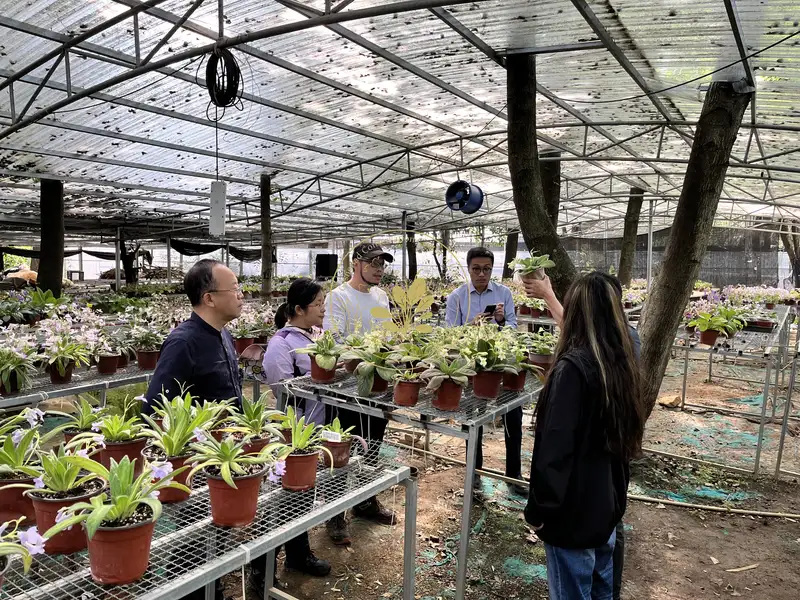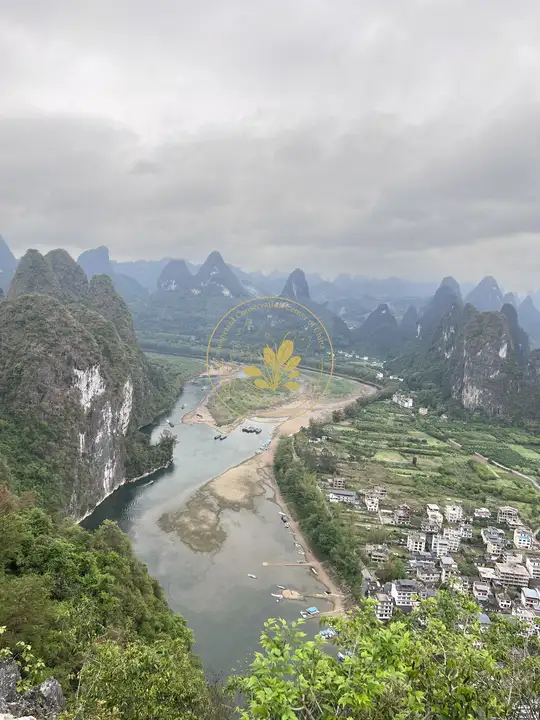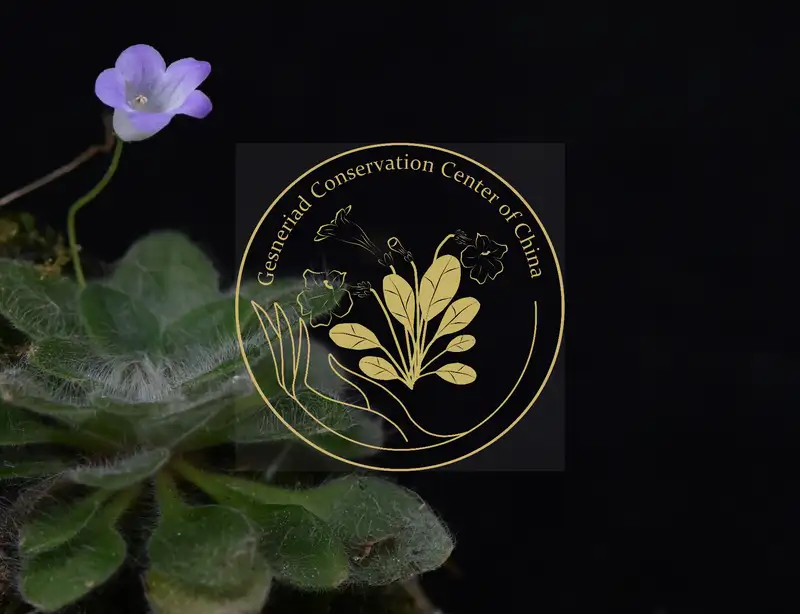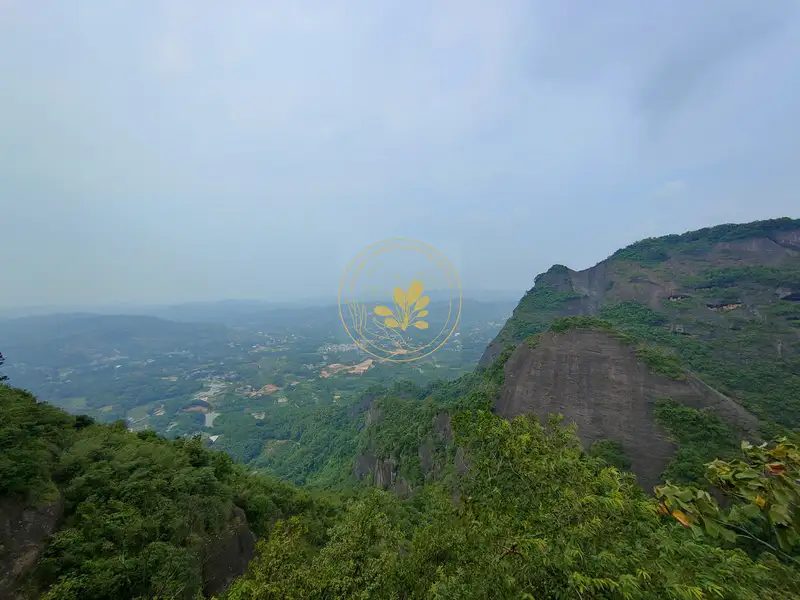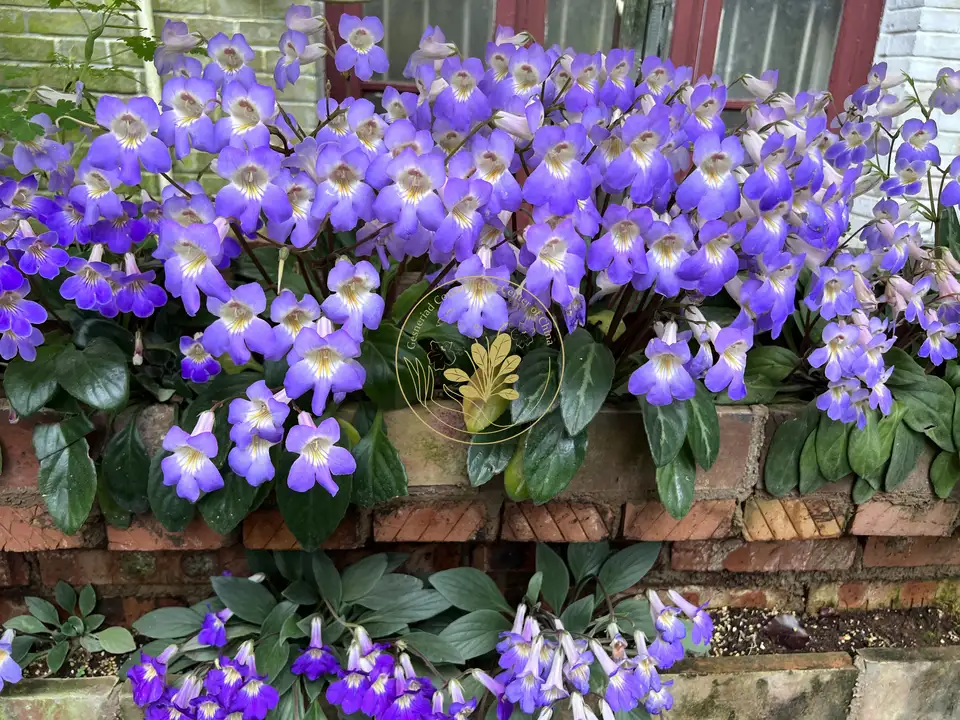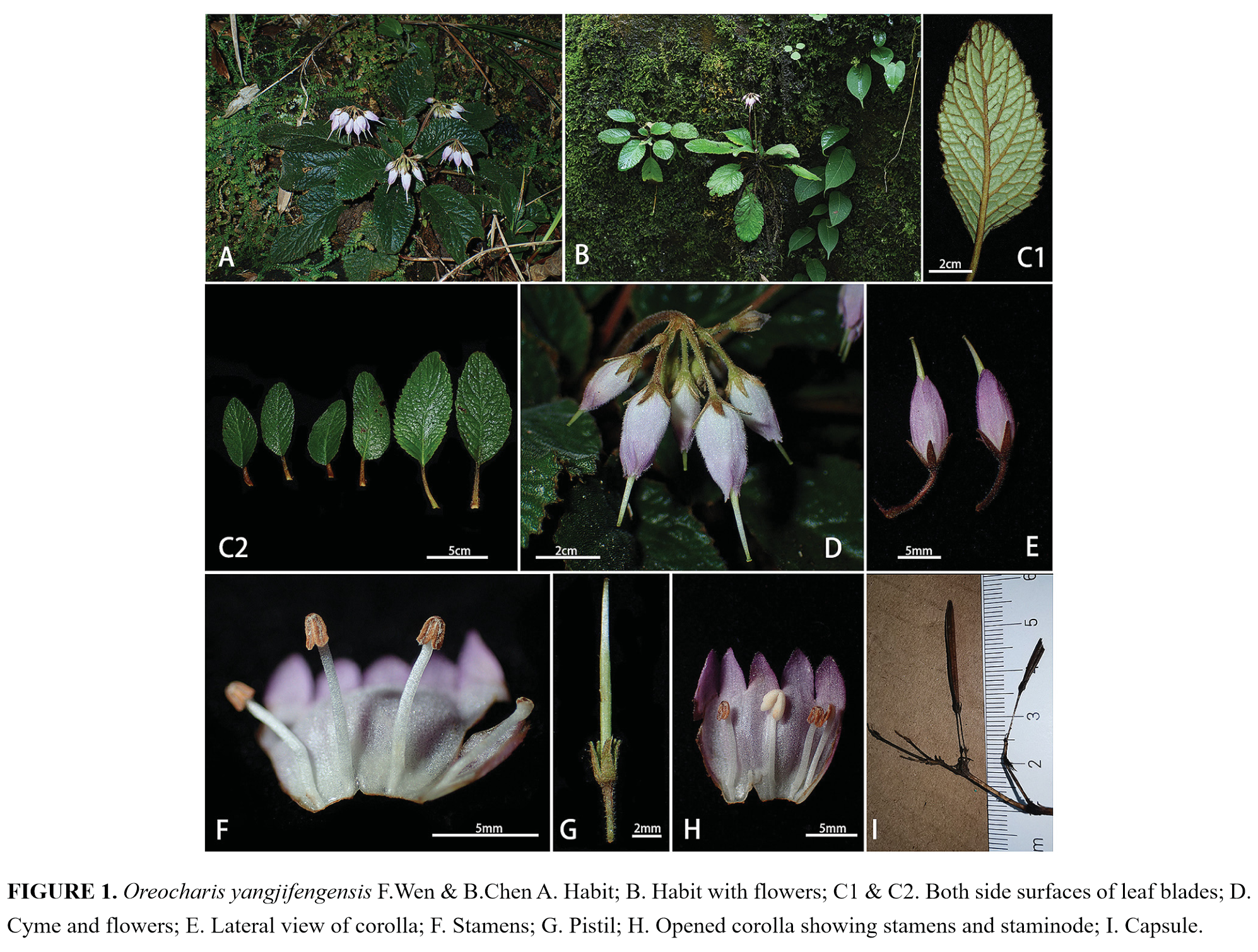No.30 Lan-Ying Su, Bo Pan, Xin Hong, Zhi-Guo Zhao,Long-Fei Fu, Fang Wen& Stephen Maciejewski
Petrocodonjiangxiensis(Gesneriaceae), a New Speciesfrom Jiangxi, China
Annales BotaniciFennici56 : 277-284
Abstract
Based on morphological, cytological and molecular data, a new species of Gesneriaceae, Petrocodonjiangxiensis F. Wen, L.F. Fu & L.Y. Su from Jiangxi Province, China, is described and illustrated. Morphologically, it resembles the most P. asterocalyxF.Wen, Y.G.Wei&R.L.Zhang. Both species have axillary cymes, an actinomorphic calyx and similarly shaped corolla, but P. jiangxiensiscan be easily distinguished by ovate-elliptic to broadly ovate leaf blades, three bracts with a crenulate to serrate margin, smaller calyx lobes 5–6 × ca. 1 mm, smaller corolla 1.7–2.3 cm long, and glabrous anthers. Petrocodonjiangxiensis has a 2n = 36 somatic chromosome number.
OriginalLink: https://doi.org/10.5735/085.056.0413
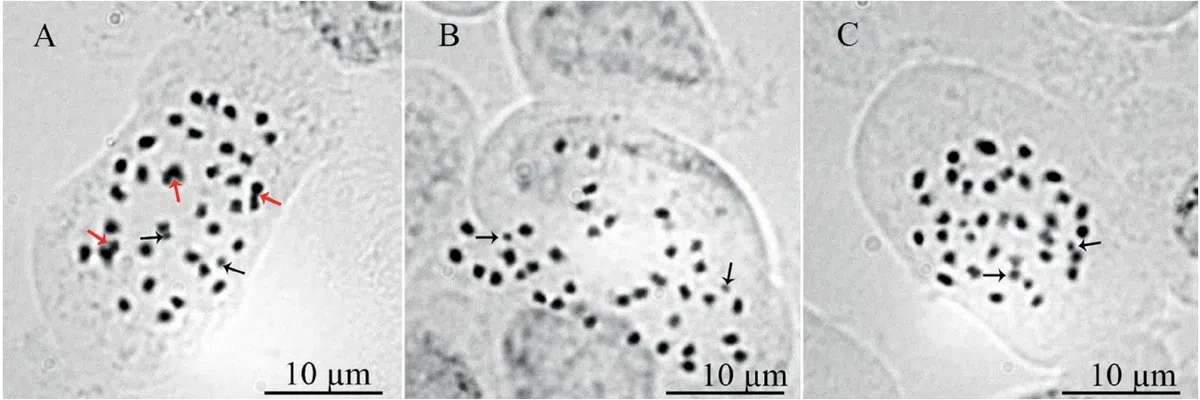
Fig. 1. Somatic chromosomes at metaphase of Petrocodonjiangxiensis (2n = 36). — A, B and C are from differentcells. Red and black arrows indicate overlapping/touching chromosomes and satellites, respectively.
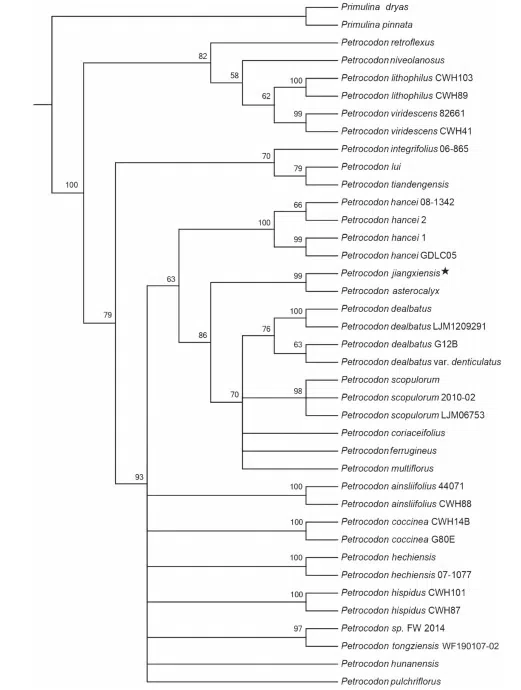
Fig. 2. Strict consensus tree resulted from a Maximum-parsimony (MP) analysis based on combined trnL-F and ITS sequences of 26 species. Bootstrap values > 50% by MP analysis are shown around the corresponding nodes. The star indicates the new species.
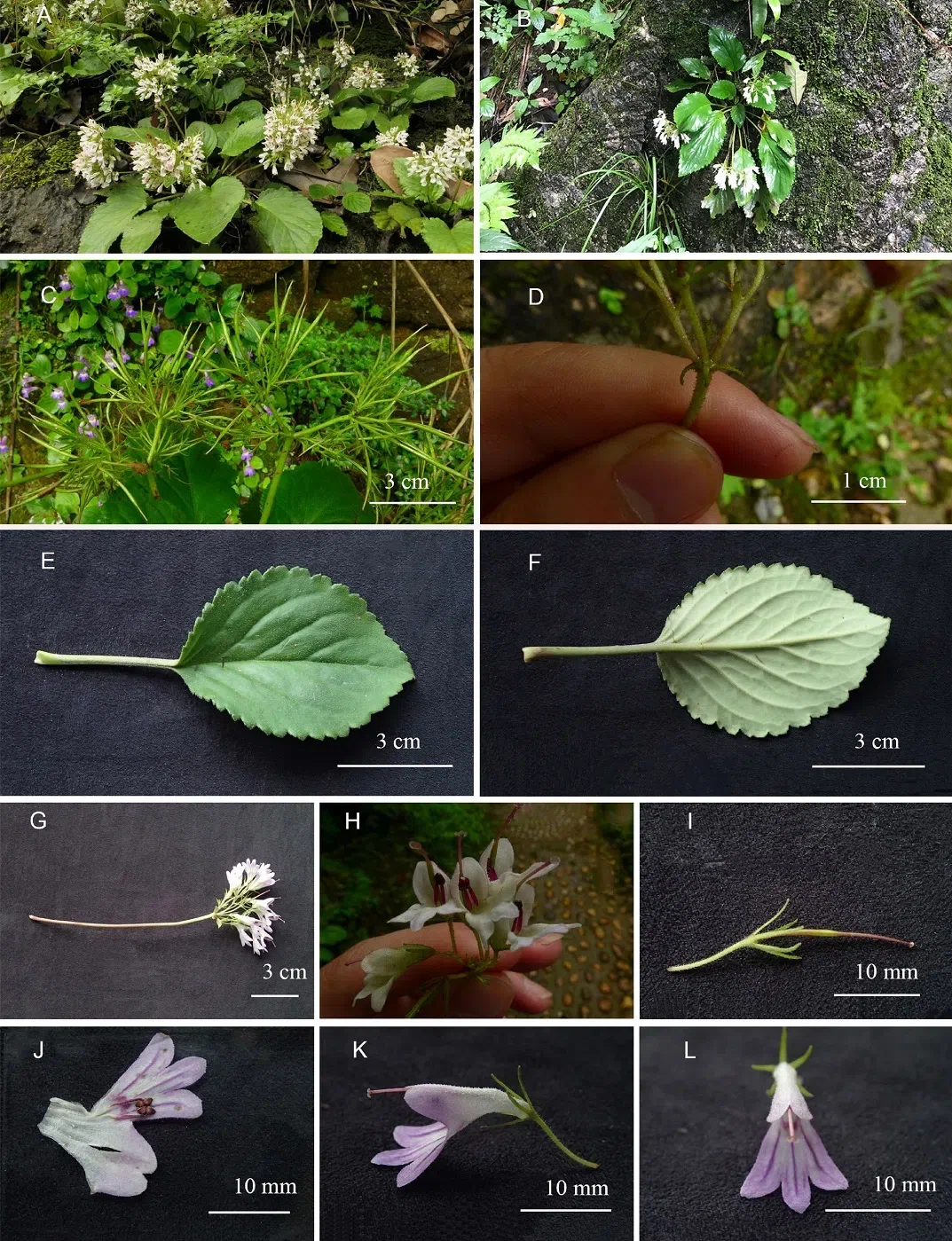
Fig. 3. Petrocodonjiangxiensis. — A and B: Habit of flowering plant in native habitat. — C: Fruits. — D: Bracts. — E: Adaxial leaf surface. — F: Abaxial leaf surface. — G: Inflorescence. — H: Stamens. — I: Calyx and pistil. — J: Staminode. — K: Flower in lateral view. — L: Flower in front view.



